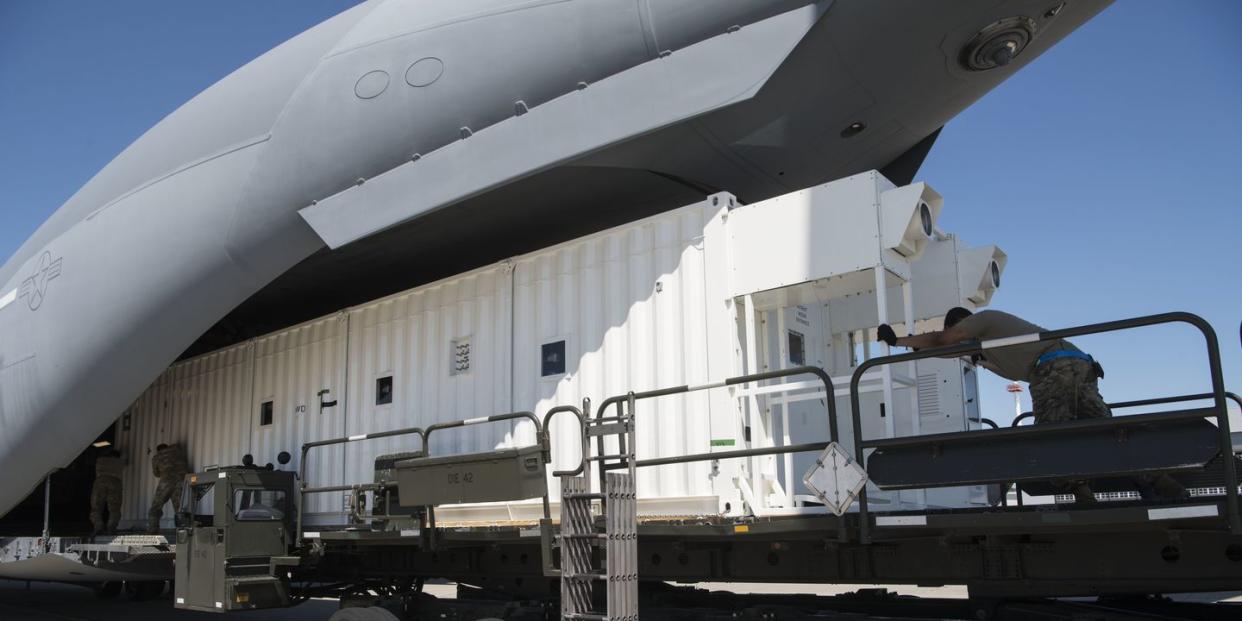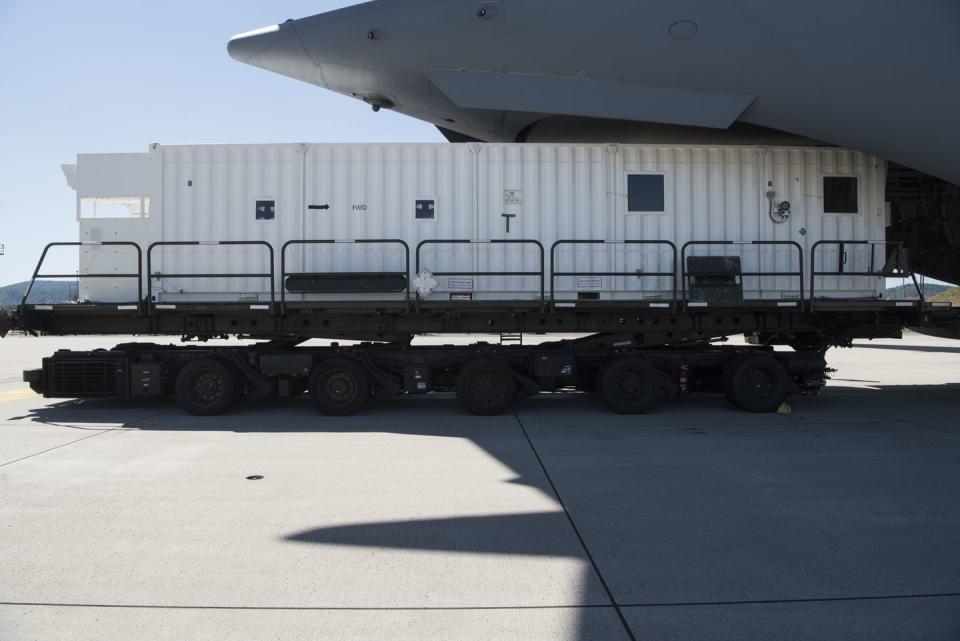The USAF Is Transporting COVID-19 Patients in Modified Shipping Containers

The Air Force is using a modified shipping container to transport COVID-19 patients worldwide.
The shipping container was designed to move patients without infecting the crews of the transport planes carrying them.
Each shipping container can carry up to eight patients on stretchers.
The U.S. Air Force is using modified shipping containers to safely transport people with the coronavirus from one location to another. The containers are designed to carry patients on stretchers or on foot, and are loaded into the back of heavy transport planes. A specially designed air filtration system ensures the virus does not escape the container to pose a danger to the air crew.

The containers, known as Negatively Pressurized Conexes (NPC), are based on standard Conex (Container Express) shipping containers used to ship goods worldwide. The boxes are modified with safety seats allowing them to carry up to 28 passengers or 23 ambulatory patients, complete with seatbelts. Alternatively, an NPC can carry eight patients on litters. The NPC also includes a special chamber where medical personnel can safely change into and out of personal protective gear.
Once embarked, the NPC is then loaded onto a C-5 or C-17 transport and then flown to the destination. The larger, jet-powered transports can carry two NPCs each while the smaller C-130J Hercules can carry a smaller version, NPC Lite.

NPCs use a special negative air pressure system to keep crews transporting the containers safe. Under normal circumstances, contaminated air from a Conex housing coronavirus patients could leak out, presenting a risk to the flight crew. Negative air pressure systems work by continuously pulling air in from the outside. The system pumps back out but not before running it through a filter first.
The Air Force built the system after it realized it would need a system in case it needed to safely move people infected with the coronavirus. Stars and Stripes reports the service originally used a similar system, the Transport Isolation System, in April to move three government contractors in Afghanistan infected with the virus to Ramstein Air Force Base in Germany. Ramstein is the U.S. military’s main medical hub in Europe, and the base’s Landstuhl Regional Medical Center is capable of treating most sick and injured U.S. personnel. Very badly injured troops are often flown from Landstuhl to the continental U.S.

The Transport Isolation System was built to only carry two to four patients at a time, and the Air Force decided it would need a way to carry even more patients. According to the Air Force, NPCs went from a “back of the napkin idea” to being ready for use in just 88 days.
The NPC completed its first real mission on July 1, transporting twelve patients from an undisclosed location somewhere in U.S. Central Command’s area of responsibility to Landstuhl. According to the U.S. Air Force, the aeromedical evacuation mission took 22 hours to complete. The services has transported more than 100 patients over 18 missions.
Source: Stars and Stripes
You Might Also Like

